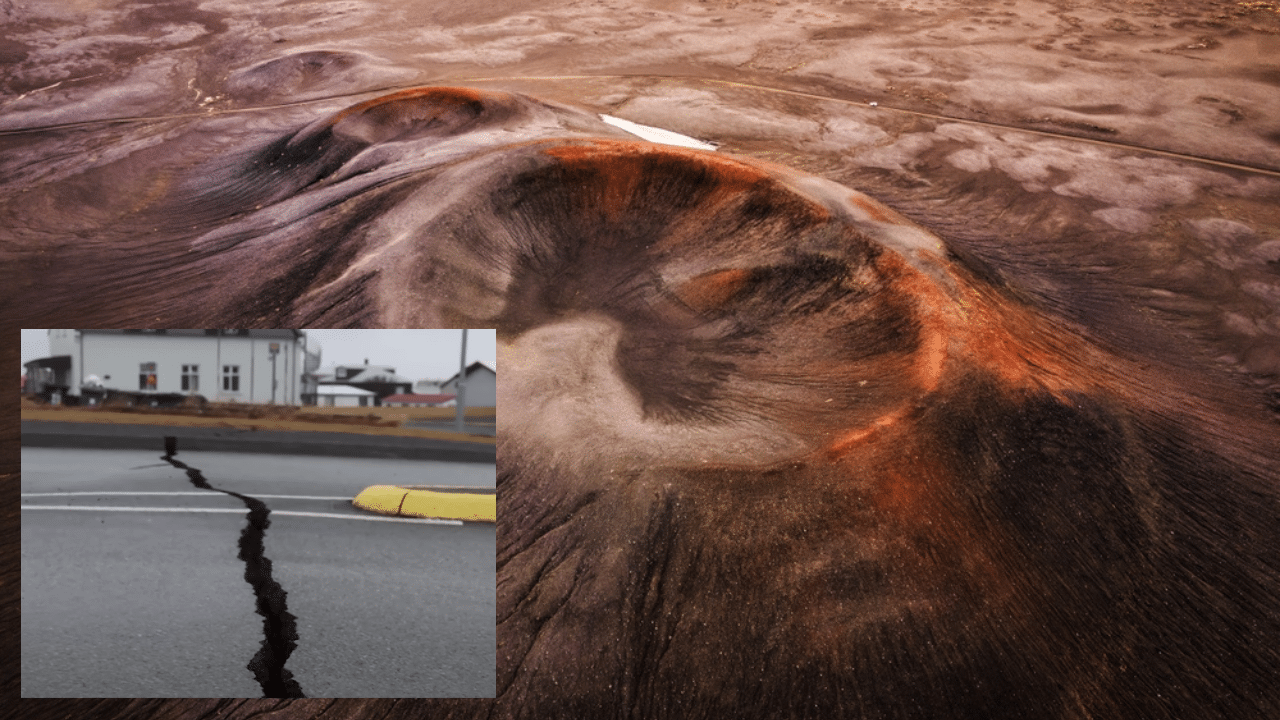The whole of Iceland ‘is on edge’ as experts say earthquakes which have been rumbling beneath the surface for days and have torn through a town are a precursor to a volcanic eruption.
More than 700 quakes have been recorded in the southwestern Reykjanes Peninsula since yesterday, and despite them being slightly weaker than in previous days the Fagradalsfjall volcano is still expected to erupt.
Iceland has been shaken by thousands of tremors over the past few days, with a state of emergency declared on Friday and around 4,000 people ordered to leave the fishing community of Grindavik.
Evacuated residents have reported hearing ‘unholy sounds’ from beneath the ground as they fled, while those allowed to return to collect belongings from their deserted homes were told: ‘If you hear sirens, drop everything and get out!’
Huge sinkholes have opened up around the town, and now dramatic aerial footage captured by the Coast Guard shows a chasm running through the centre, with smoke pouring out of the gaping splits as magma rises.
Meanwhile, authorities are urgently preparing to build defence walls around a nearby geothermal power plant which they desperately hope will protect it from lava flows – amid concerns that a volcanic eruption could be imminent.
Iceland’s Justice Minister Gudrun Hafsteinsdottir told state broadcaster RUV that a large dike has been designed to protect the Svartsengi geothermal power plant, located just over six kilometers from Grindavik.
Equipment and materials that could fill 20,000 trucks were being moved to the plant, she said, and construction is awaiting formal approval from the government.
The plant produces hot and cold water and electricity for the entire country and a spokesperson for its operator, HS Orka, said a disruption would not impact power supply to the capital Reykjavik.
Magma has been accumulating under the town and experts said yesterday that a ‘corridor’ around nine miles (14km) long has developed beneath it, with an eruption possible anywhere along the intrusion.
Fears have been mounting that an eruption could see a repeat of the chaos caused by the 2010 Eyjafjallajokull eruption, however volcanologists have said that Fagradalsfjall would not produce a huge ash cloud as it did if it does blow.
Matthew James Roberts, director of the service and research division at Iceland’s meteorological office said: ‘We believe that this intrusion is literally hovering, sitting in equilibrium now just below the earth’s surface.
‘We have this tremendous uncertainty now. Will there be an eruption and if so, what sort of damage will occur?’
The head of the Department of Public Safety has said it is getting ‘more and more difficult’ to get into the area of Grinvadik as giant chasms continue to widen.
‘That area continues to sink and new cracks are constantly forming on the surface. We define this area a bit like a sliding glacier that is heavily cracked and even covered with snow, so it is very dangerous to be inside that area.’
While people have been able to make quick trips to their homes in recent days to gather belongings and retrieve pets, anyone who has been unable to do so thus far will need extra safety precautions if returning today, he said.










